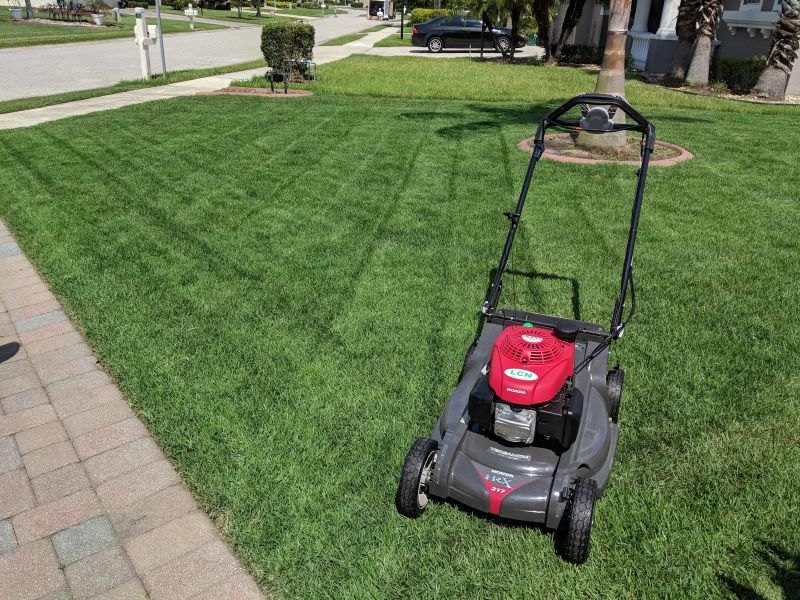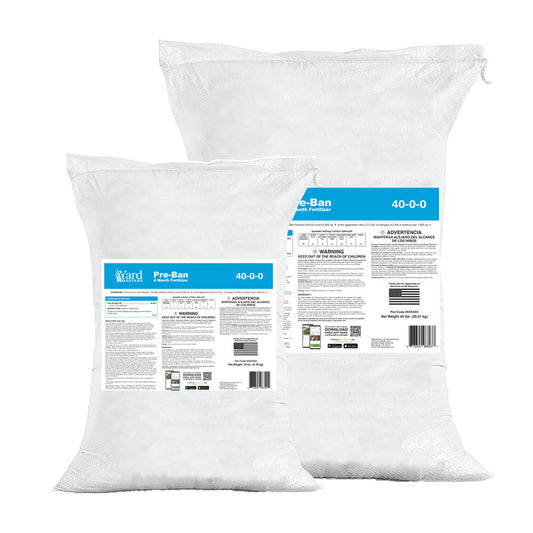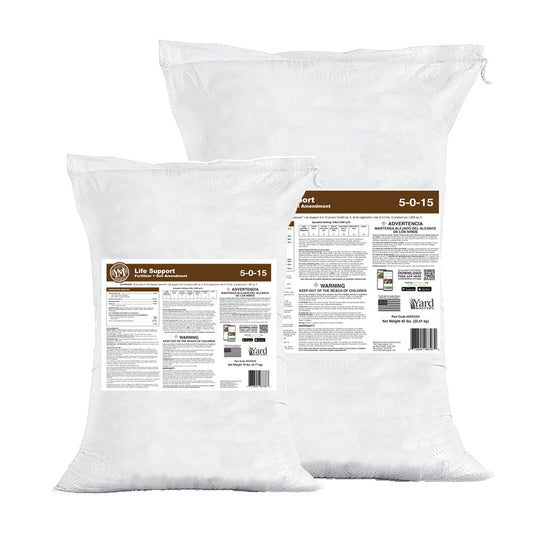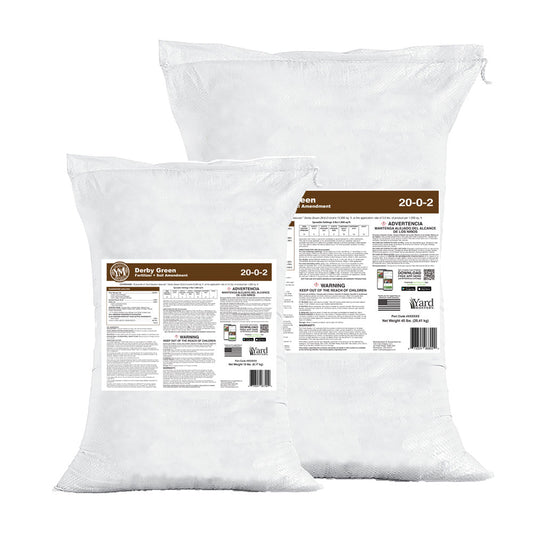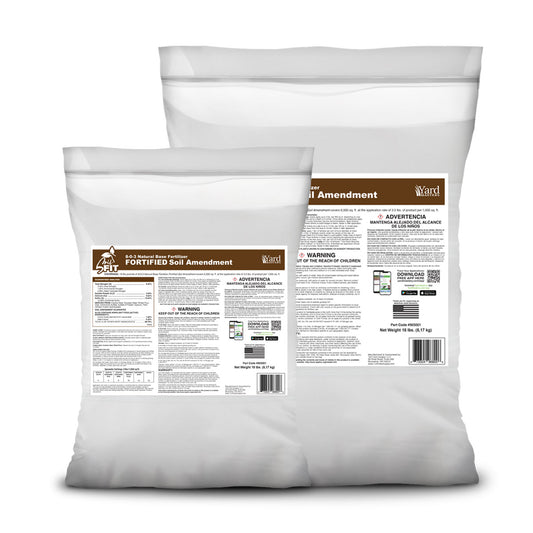Hello there Lawn Care Nuts and welcome to “almost Memorial Day weekend!”
It’s a big weekend for many reasons, primarily in remembering those who have given the ultimate sacrifice for our country. Those sacrifices are what allow us to enjoy such a weekend at home with family, in our lawns. Thank you!
It’s also kind of what I call the “send off into summer” lawn application time of the season. As you guys know, I’m not a fan of pushing too much nitrogen in the heat of summer.
Don’t get me wrong, I want the lawn to stay green and growing - especially if you are irrigating properly - but there are times when it just gets too hot for the turf and it stresses.
Pushing growth on it during these times can actually stunt it, hard.
That said, we are not there yet!
In fact, the end of May is the perfect time to really get your lawn going with a nice, final push of growth to encourage roots, stolons, and rhizomes.
Even those of you facing the “spring rain to heat hangover” your lawn can still use a little push as long as you keep it irrigated
Lawn Fertilizers
In my video this past weekend, I talked about the 18-0-1 Greene Punch liquid lawn fertilizer and showed some of the calculations behind the application rates. I also promised some more context and detail around it, so here we go.
Why Nitrogen For The Lawn?
First off, it’s the #1 way to bring a visual response to the lawn’s color.
Want a thicker and greener lawn?
Hit it with a high nitrogen fertilizer and wait 10 days (or less) - you will see the difference if temps are warm enough.
But more than that, Nitrogen is an important macronutrient for all plants because it is a major component of chlorophyll.
Chlorophyll, as you will remember from 8th-grade science class, is the element by which plants convert sunlight to energy by producing sugars from water and carbon dioxide. This process is called “photosynthesis” and it cannot happen without adequate nitrogen.

It is also a major component of amino acids, the building blocks of proteins. Without proteins, plants become lackluster, wilt, and eventually die.
Did you know the atmosphere around us is 78% nitrogen?
I’m not going to get too deep into it here, but you can: study the Nitrogen Cycleand understand how it is made available to plants via the soil and also how lightning can bring in free available nitrogen to your lawn too!
All that said, we do need to add nitrogen to our lawns in order to keep them growing thick and healthy and we have several options in doing that.
In today’s study, we are going to look at liquid Nitrogen fertilizers because they are a great option for several reasons which I explored in this weekend’s videoand also in this podcast (time stamp here) in preventing runoff of fertilizers into lakes, rivers, and other bodies of water.
How Much Nitrogen?
People will ask me often “Allyn, why are you recommending ¾ lb/N/1,000 sq ft? Where did you get that information from?”
Answer: University extensions tell us how much we need based on grass type. It’s a target to be sure but it’s one that you can follow.
You see, 99% of you don't want to mess with a soil test and I get that. So you just want to know what to put down, when to put it down, and how much.
Following the basic university guidelines for nitrogen for the season will get you a long way down the road for sure. Let’s look at two recommendations (notice anything?)

These are just quick Google searches and you can see that universities are recommending between 1 and 4 lbs of Nitrogen per 1,000 sq ft of lawn space each year (translated as: during the growing season).
This is literal “pounds on the ground” of Nitrogen.
The Nitrogen can come in many forms including Manure/bio-solids (like Milorganite), commercial fertilizers/synthetics (Scotts TurfBuilder), and even from the sky.
It can come in granular form or liquid form or both.
The key is that you literally want to get between 1 and 4 lbs of nitrogen across each 1,000 sq ft of lawn area, yearly and switching up your sources is a great idea! (You don’t always eat steak, sometimes you want some shrimps!)
Also::: It is imperative that you Measure Your Lawn before starting any lawn care program!
Numbers On The Bag/Jug
This is also why the numbers on the bag or jug are so important. They tell you how much of the product is actually Nitrogen.
In the case of 18-0-1 Greene Punch, 18% of what’s in the jug is nitrogen.
(18-0-1 indicates the N-P-K or the “fertilizer analysis.” Nitrogen-Phosphorus-Potassium are called “macronutrients” ←-- watch this for real y’all and leave him a comment)
As another example, in the case of Milorganite which is a 6-4-0, 6% of everything in the bag is nitrogen even though it’s a granular product instead of a liquid.
Here is a previous post where we calculated “pounds on the ground” for granular products.
How Often To Add Nitrogen
Next, think of your own yearly diet. You probably average 2 meals a day almost every day so that would then mean that you, as a human, eat somewhere around 730 meals a year.
One week you may go on a cruise vacation and eat 4x your normal amount (plus snacks), whereas the first week of January you may cut down to only 1 meal a day (no snacks) because of a New Year resolution, but on average, it’s 730 meals a year (plus snacks) to keep you performing at your best.
But do you eat all of them in one day or spread them out?
Same goes for the grass - we want to feed it methodically and consistently over the course of the season instead of giving it all the food right up front.
In fact, the more experienced you get, the more “spoon feeding” you will do (plus snacks) to help your lawn maintain a consistent state all year round.
This is especially important if you live somewhere that fertilizer blackoutsare commonplace in summer or fall.
If you were to take the university recommendation of 4 lbs/1,000 sq ft for your St Augustinegrass, then you could break that up something like this:
2 lbs spring
.5 lbs summer
1.5 lbs fall
-----------------
4 lbs total
In fact, I’d say that would work pretty good for just about ANY grass type!
The only exceptions being Centipede, Fine Fescue, and Bahia - those need much less N per season.
However, Bermuda, Tall Fescue, and St Aug can probably take even more! (get lawn plans with my exact recs here)
You see, it’s ok to push a little more nitrogen early on in your lawn care journey, even with Centipede and Bahia, you can push hard in the beginning and be just fine.
Zoysia also sometimes likes a hard kick in the face to get it going. Here is my Empire Zoysia after a hard “bulking cycle” of 1.5 lbs/N/1,000 sq ft.

Empire Zoysia 1.5 lbs/N/1,000 sq ft. I don’t recommend this but wanted to show it can be done.
So figure on putting down a good 4 or 5 lbs of nitrogen on your lawn in your first season but break that up into logical “meals” for the lawn.
Give it some more frequent meals (plus snacks) in spring and fall and back things down during the summer but always be pushing it some.
Anywhere from ½ lb applications up to 1 lbs nitrogen applications can be good meals for your lawn to really encourage it to thicken up and run!
I typically recommend you guys stay between the ½ and ¾ lbs of Nitrogen per application range but it’s certainly ok to push that a little harder if your lawn is not responding as you’d like it to.
I look at the early days of your lawn care relationship like a bulking cycle. Put a lot of Nitrogen in to drive results quickly in the first season or two and then let things level off and even reduce over time.
Lots more we could talk about here on my philosophies in lawn care and you’ll hear about those each week in my podcast.
With that, let’s look at a liquid product and calculate the “pounds on the ground” you get and then review some strategies where a low-use-rate product may come into play.
18-0-1 Greene Punch
Available in 4-gallon and 5-gallon sizes or choose your own adventure for more fun.
In understanding Nitrogen “pounds on the ground” for liquids we need to know:
-
How much volume do we have?
- In this case, 1 gallon
-
How much does the volume weigh?
- In this case 10.5 lbs. All liquid products will tell you on the label how much the volume weighs in pounds and/or ounces.
-
What is the Nitrogen percentage of the product?
- In this case, the product is 18% Nitrogen
-
What is our application rate?
- In this case, we are going with the low rate from the label which is 12 oz/1,000 sq ft
In case you didn’t catch it, ALL of this information is found on the product label.
1 gallon = 128 oz
Net Weight: 10.5 lbs
10.5/128 = .082lbs
This means that each fluid ounce of the Greene Punch weighs .082lbs.
The reason this is important is because our application rate is also expressed in ounces. The application rate is 12 oz/1000 sq ft. Remember, this is on the label and I have chosen the low rate.
Application Rate: 12 oz/1,000 sq ft
12 x .082 = .98
This means that we are going to spray out .98 lbs of Greene Punch across each 1,000 sq ft of lawn space we have.
This is also why you need a hose-end sprayer to mix it consistently with water because it would be impossible to evenly spray out otherwise.
Either way, now we can calculate our “pounds on the ground” for Nitrogen because we know that 18% of the liquid is Nitrogen (remember, 18-0-1 with 18 being N).
.98 x .18 = .18
That means that the application rate of 12 oz/1,000 sq ft will yield .18 lbs/N/1,000 sq ft.
Tying It Together
Remember above where we talked about giving the lawn a total of 4-5 lbs/N/1,000 sq ft annually during the growing season?
Remember how I also mentioned that we want to keep color in summer but we want to be careful about pushing too hard in heat?
This is where a low use-rate product like Greene Punch can come in.
It doesn’t take a lot of Nitrogen to give a pop of color and therefore you will get the color without the massive surge of growth.
It’s also a liquid so that makes it work faster by nature since nothing has to be “broken down” to get to the soil - liquids are there with just a little water and even will have some absorption through plant leaf tissue.
Hitting the lawn with 12 oz/1,000 sq ft of Greene Punch every 4 weeks is more like spoon feeding in lean vitamins and nutrients rather than bulking, and that’s perfect for summer.
You can review my video here where I am applying in the heat of the Florida sun so that should answer your questions about “will it burn?” but for sure, you should not apply Greene Punch or any fertilizer to a lawn that is heat stressed anyway.
If you want to add on the “plus snacks” then stay tuned as I’ll be making a video to show you how to extend the green of your Greene Punch using the highly formulated Iron and Nitrogen found in 7-0-0 Greene Effect.
Memorial Day Weekend Sale EARLY
We are going to be running a sale and promotion this weekend starting Thursday and running through Monday.
It’s basically going to be $5 off your entire purchase at our store using promo code: “FERTLIFE”
However, I know some of you are wanting to order your Greene Punch now to get ahead, so we are making the coupon code “FERTLIFE” active right now for $5 off your total purchase of anything in the store. That way you don’t have to wait.
Additionally, check out our new partner, Fence Armor.
I became a retailer for them because I believe in their product.
It’s so simple yet so needed! Tired of beating up your fence posts with your weed whacker?
The guys over at Fence Armor solved the problem.
They also have a super cool Mailbox protection that looks like an American Flag.
(shipping won’t get to you in time for Memorial Day but you can still get $5 off that one and have it for the next patriotic event or even year round!)
((Also, important to know, sizes are actual measured sizes of your posts))
That said, use “FERTLIFE” for $5 off your total purchase in the store starting right now.
I’ll see YOU in the lawn!
AL



